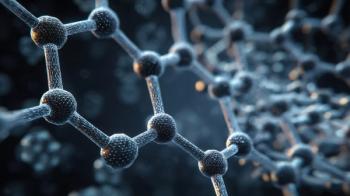
Imaging: Biomedical Applications
This Monday afternoon session will present recent advances in mass spectrometry imaging in plants, animals, and humans. It will be chaired by Shama Mirza of the University of Wisconsin-Milwaukee and will be held in Ballroom 20A from 2:30 to 4:30 p.m.
This Monday afternoon session will present recent advances in mass spectrometry imaging in plants, animals, and humans. It will be chaired by Shama Mirza of the University of Wisconsin-Milwaukee and will be held in Ballroom 20A from 2:30 to 4:30 p.m.
Khaja Muneeruddin of the University of Massachusetts Medical School will present the first talk in this session, titled “Quantifying the Neuromolecular Phenotype of Murine GM1 Gangliosidosis with Mass Spectrometry Imaging and Region of Interest Analysis.” This presentation will discuss region of interest analysis from MALDI imaging to elucidate molecular pathology in GM1 gangliosidosis.
The session’s next presentation will be given by Elizabeth Randall of Brigham and Women’s Hospital, Harvard Medical School, and is titled “Mapping Metabolism in Glioblastoma with MALDI MSI.” Randall’s presentation will describe MALDI MS imaging of lipids and metabolites in patient-derived xenograft models of glioblastoma.
Next, Michelle Reyzer of Vanderbilt University will present a talk titled “Visualizing the Distribution of Anti-Retroviral Agents in Sheep Vaginal Tissue by Imaging Mass Spectrometry.” Her research with imaging MS involved assessing drug compound distribution after topical delivery.
The next talk will be given by Peter Verhaert of M4i Maastricht Multimodal Molecular Imaging Institute, Maastricht, Netherlands. It is titled “Top-Down Mass Spectrometry Imaging of Endogenous Secretory Peptides in Clinical Human FFPE Material of Many Years Old with Immunohistochemical Validation.” His talk will discuss the imaging of human neuropeptides in clinical formalin-fixed paraffin-embedded (FFPE) tissue using a fully integrated microscope–MALDI ion trap TOF system.
Then, Amina Woods of NIDA-IRP, NIH (Baltimore) will present a talk titled “How Innovative Imaging MS Approaches Shed Light on What Happens in Traumatic Brain Injury.” Her research involves the use of MS imaging to assay lipid changes in traumatic brain injury and evaluate the efficacy of a peptide agonist.
The final presentation in the session, “Development of a Dual Imaging Strategy Combining Radio- and Mass Spectrometry-Imaging to Study the Biodistribution of 14C-Graphene Oxide,” will be given by Hélène Cazier of Université Paris Saclay, MetaboHUB. Her talk will discuss the combination of the two techniques for spatially resolved and quantitative analysis of graphene nanoparticles.
Newsletter
Join the global community of analytical scientists who trust LCGC for insights on the latest techniques, trends, and expert solutions in chromatography.





